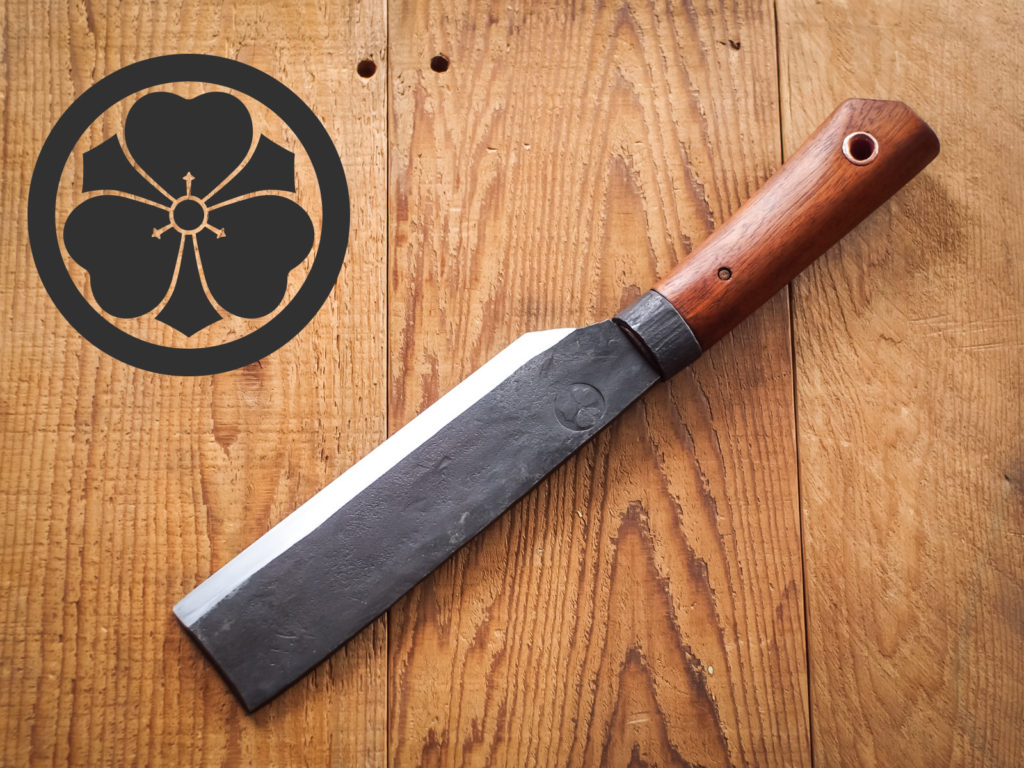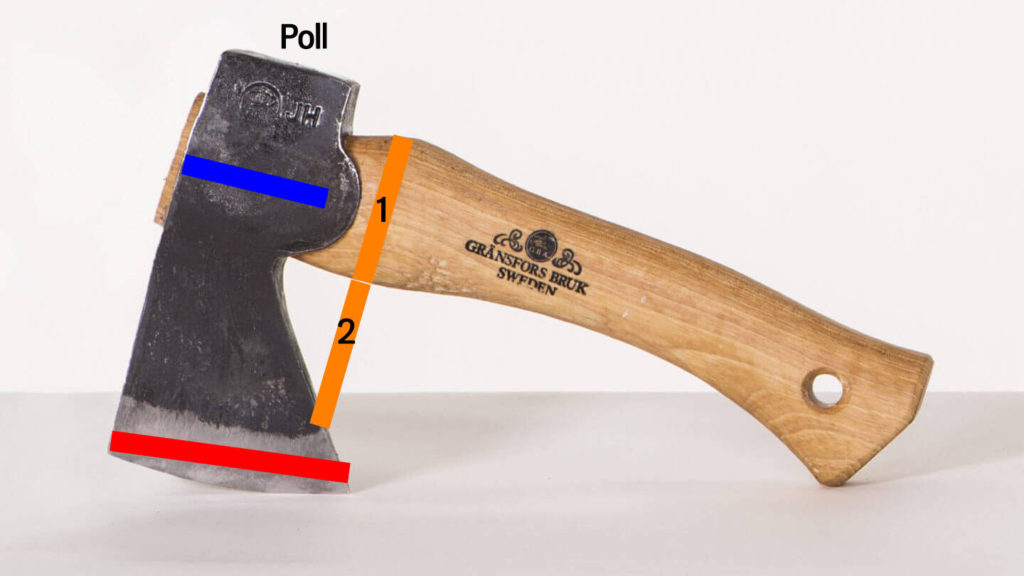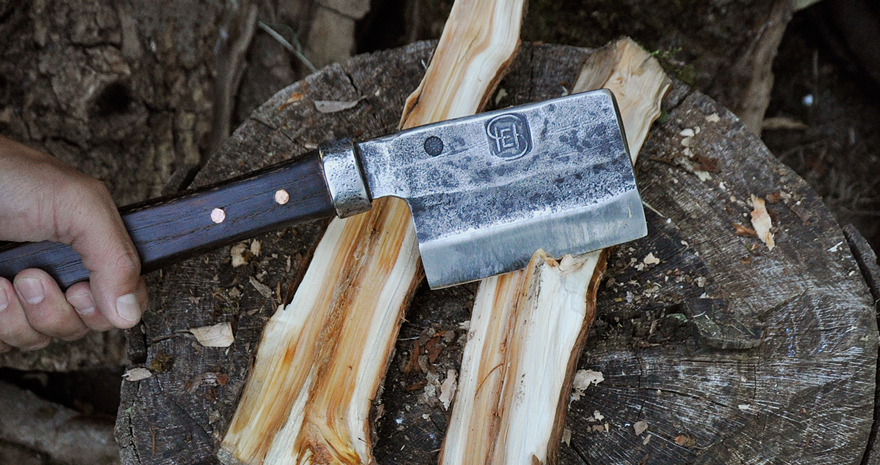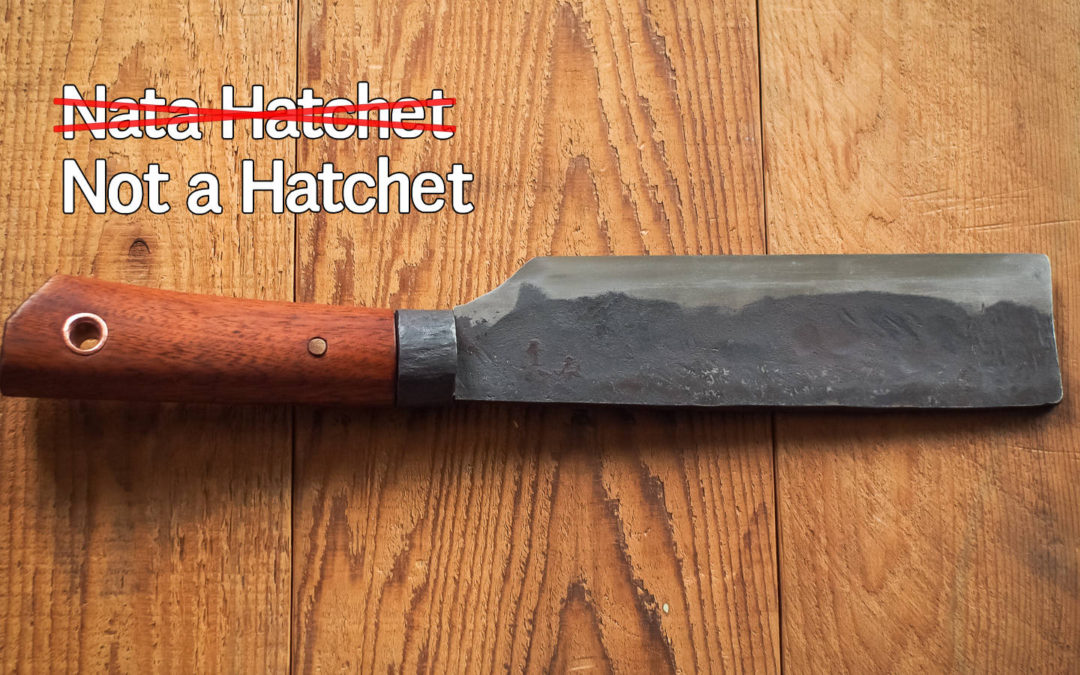The Japanese Nata is often referred to as a hatchet. It’s time that this Japenese machete stops pretending and admits it is not a hatchet. I explain why.
First let’s define what an ax and a hatchet are, starting with the dictionary definition.

Source: https://www.merriam-webster.com/
Here is a definition of a Japanese nata. The source is omitted because it is wrong.

The nata is short-handled (some of the time) and is used with one hand. It is also used for chopping and splitting wood. So far it sounds like a hatchet.
A hatchet is an ax that can be used with one hand. So is a nata an ax? According to Merriam-Webster, an ax has a “heavy edged head” with the “edge parallel to the handle”. The edge of a nata is parallel to the handle, but does it have a head? I would argue no, a nata does not have a head, it only has a blade. So based on the fact that the nata does not have a heavy head means it is not an ax and thus not a hatchet.

Beyond Dictionary and Common Usage
Usage defines meaning. If enough people use the word literally to mean virtually the dictionary will state that literally can mean virtually. Because of common usage the word literally can now mean what is used to mean or the exact opposite. That doesn’t mean that using the world literally to mean the opposite of what it originally meant is clear or a good definition for someone who desires words to have meaning and useful value.
In other words we can’t always rely on dictionary definitions.
Just because enough people call a nata a hatchet doesn’t make it a good definition.
So let’s go beyond the dictionary definition of an axe or nata. Let’s look at the the features that axes and nata actually have and compare them that way. Axes often have all four of the following characteristics but at a minimum three of the following. Nata will only have 2 at most of these characteristics while sometimes 1 or none of the following characteristics. See the anatomy of axe to refresh your axe terminology.
Four Reasons Why a Nata is Not a Hatchet
1) Axes have a Handle Longer than the Blade
In my opinion, in order for a tool to be an axe (or hatchet) it will have a handle longer than the blade. If the blade is longer than the handle it isn’t an axe. While some nata do have a handle longer than the blade, many nata have a blade over twice as long as a handle. This puts it into machete or knife territory.
2) Axes have a Poll opposite the blade
Additionally, axes have a poll (or butt), even if it is short, where the blade is at least partially offset by weight opposite the blade and further past the handle. There are a few exceptions to this, such as a fireman’s axe that has a spike instead of a poll or a double-bit axes where the poll is replaced by another bit and some tomahawks or battle axes which have no poll at all. However, axes that have no poll still have the other three characteristics mentioned.
I have not seen a nata that has a poll.
3) Axes have a Cutting Edge located multiple handle-widths beyond the handle
Axes have a cutting edge that is spaced out multiple widths away from the handle.
The cutting edge of a nata is often within one handle width of the handle itself. The blade of a nata is not far enough out from the handle. This causes it to look and function more like a knife, cleaver or machete. I have seen some nata that have a cutting edge that extends multiple handle width beyond the handle which makes them more axe-like.
4) Axes have a cutting edge that is longer than the cheeks
On an axe the part of the head that is perpendicular to the handle (the cheeks) are shorter than the cutting edge. There are some splitting axes which have a cutting edge about the same length as the cheeks. In these exceptions they have the previous 3 characteristics.
I have not seen a nata that has a cutting edge that is longer than the cheeks.


The Most Axe-Like Nata
Below is a picture of the most axe-like Nata I’ve seen. I might even be willing to concede it is a pseudo-hatchet. But it is not a true hatchet. It’s not a hatchet because it only has 2 of the characteristics listed above.

The nata above ticks a couple axe boxes. First, the handle is longer than the blade. Second, the cutting edge extents multiple handle-widths beyond the handle. However, it has no poll and the cutting edge is not longer than the cheek. So it only ticks 2 out of 4 attributes axes have. It would need to have the cutting edge be longer than the cheeks or a poll or some kind offset for me to consider it a hatchet or axe.
Axes often have all four of the above characteristics and at a minimum have three of them.
A Nata is axe-like but not an Axe
There are some similarities with some types of natas and some hatchets. However some natas are much more in the machete or knife category and have few similarities with axes other than having a handle and sharpened edge. I think it is much more useful and consistent to separate a nata from axes and hatchets. Birds and bats have similarities but that doesn’t mean that bats are birds or bats are birds.
I realize that one could cite various sources (like the erroneous definition at the beginning of this article) that refer to a nata as a hatchet (and also a froe, really?). But clearly a nata is in a different category from a hatchet or one handed axe.
I’m not anti-nata. I’ve never used one but I think natas look cool. I have a great affinity and appreciations for Japanese tools and weapons. However, I think that describing a nata as a hatchet is confusing, inconsistent, wrong and shouldn’t be done. A nata is not a hatchet.




I think in the end common usage is the ultimate arbiter in determining the definition of a word, but I would have to agree that I personally would not call a nata a hatchet. I think the reason it gets referred to as a hatchet by so many people isn’t due to its form so much as its usage. A nata is most commonly used for the same tasks you use a hatched, but it trades in being less specialized for heavier wood splitting duties for being more versatile and much better suited for detail work.
Good points Bob, especially about what a Nata is used for. I agree usage does define meaning.
People use words in inconsistent and imprecise ways and doing so ultimately causes confusion.
For example “literally” historically meant “exact equivalence” but now it can also mean the exact opposite of that definition because of common usage.
Out of ignorance I will refer to animals that are actually “hares” as “rabbits” because to my untrained eye I don’t know how to recognize the difference. But they are two different animals.
I can call a motorcycle a bicycle and if enough people use the word bicycle when referring to a motorcycle, the meaning of the word bicycle will have changed. But now when I refer to a bicycle, you won’t know if it has a motor or not unless there is more context or more adjectives such as “motorized bicycle”. But that doesn’t mean that a bicycle is the same as a motorcycle. And it doesn’t mean that referring to motorcycles as bicycles is a precise or beneficial evolution in the usage of language.
Similarly, even though some people will call a Nata a Hatchet doesn’t mean they are the same. I think if you are going to call something by the same name it should refer to the same thing.
I don’t believe a Nata is a hatchet by any objective criteria and I think it is unhelpful to refer to a Nata as a hatchet.
Thanks for your comment. I’m going to go research the difference between hares and rabbits…